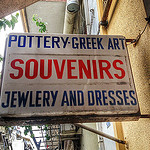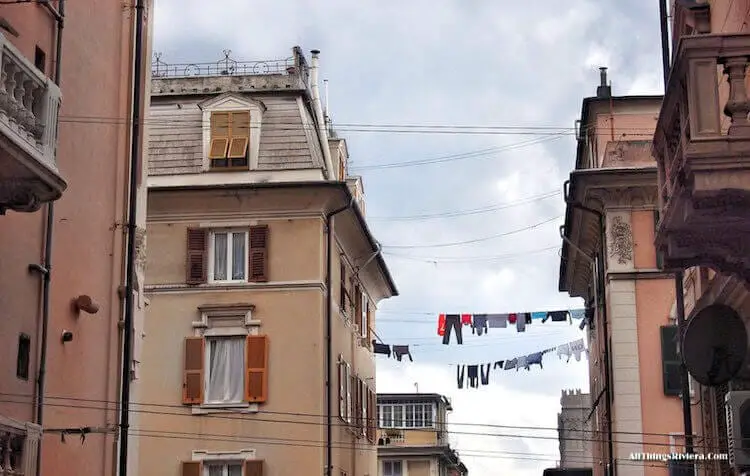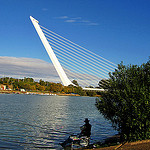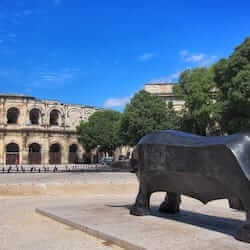The Foro Italico manages to combine the ludicrous with the appalling. It is found in the north of Rome and is, in a way, the most incredible thing I have ever seen.
Imagine a monument constructed by the Nazis for the glorification of Adolf Hitler and his achievements that for some reason survived WWII – only to be integrated, a few years after, into the building complex of a prestigious global event that Germany had the honour of hosting, say: the Olympic Games.
Unthinkable, surely. But such a monument exists – with the only difference that you have to replace Hitler’s name with that of Mussolini. And Germany, of course, with Italy.
Therein , you might say, lies the rub. Nobody has ever managed to remain angry with the Italians for long.
I knew the history of the Foro Italico and was well aware, for example, that it had formerly been the “Foro Mussolini”, that it had been built in the 1930s as a 20th century version of a Roman forum and that it had been conceived to bolster the Fascist government’s attempts of portraying its leader Benito Mussolini as a “modern-day Caesar”: so the obelisk at its entrance gates – with MUSSOLINI DUX engraved in huge letters on its side – could not surprise me.
The official excuse for not removing the obelisk at the end of WWII was – wait for this – that it was “too heavy”. Removing the “Mussolini, the Leader” inscription was also deemed to be “impossible”.
(Question: If this had been Berlin, and the obelisk had borne the inscription “Adolf Hitler, our Fuehrer” – do you think they would have been able to come up with a different solution?)
I also knew of the Stadio dei Marmi before our visit. This is a sports stadium that is surrounded by 60 statues, each of which portrays an athlete who is practicing his discipline while at the same time representing one of Italy’s provinces. (After last week’s trip to the EUR for “the good” side of Fascist architecture – this is both the bad and the ugly. My personal favourite among the statues is the hockey player, who, for reasons unknown, is the only athlete who has kept his trousers on.)
The one thing in the Foro Italico for which I was not prepared, however, was the approach to the (later-built) Olympic stadium, featuring mosaics and engraved stone blocks. These give you nothing less than a brief introduction into the history of Italian Fascism, from the end of WWI: the moment when Italy “had, finally, acquired its own Empire” …
… via the establishment of the “movement” …
… to the moment when Imperial past and present culminated in the person of a single man …
… so good they named him eight times. Comfortable to know, then, that Italy was “dedicating its youth” to this great man.
And this was where the “youth of the world” congregated, only 15 years after the end of WWII (for the 1960 Olympics: you can see the Olympic Stadium in the background in some of the photos): the place to which a modern, democratic Italy had invited them.
The mind boggles …
To visit the Foro Italico, one of the remaining examples of Italian fascist architecture, take Tram Line no. 2 to Mancini (the line starts right outside Flaminio metro station near Piazza del Popolo). Cross the Tiber river on the near-by Ponte Duca d’Aosta, and you will see both the stadium and the obelisk.













